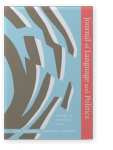Vol. 19:5 (2020) ► pp.766–785
The ideological construction of Western ISIS-associated females
Since the outbreak of the war in Syria, some Western women and girls have travelled to the warzone to join the group known as the Islamic State of Iraq and Syria (ISIS) and marry some of the group’s fighters. However, since the collapse of the ‘caliphate’ some of the women and girls have been stranded amid reluctance to accept them back to countries of origin. The women and girls have been the subject of various descriptions and labels. This is a conceptual and theoretical study which examines the ideological construction of females who travelled from Europe and West to join ISIS. The paper uses discourse analysis to examine the use of particular labels in the Western media, drawing primarily from the British press, on the ISIS-associated females seeking return to the West. The paper finds that a naturalized and dominant discourse has developed in the ideological construction of the females.
Article outline
- 1.Introduction
- 2.Theoretical framework
- 3.Ideological construction of ISIS-associated women in Western media
- 3.1Headlines and ideology
- 3.2Terrorism and gendered discourse
- 4.Policy responses
- 5.Conclusion
- Declaration of conflicting interests
- Note
-
References
